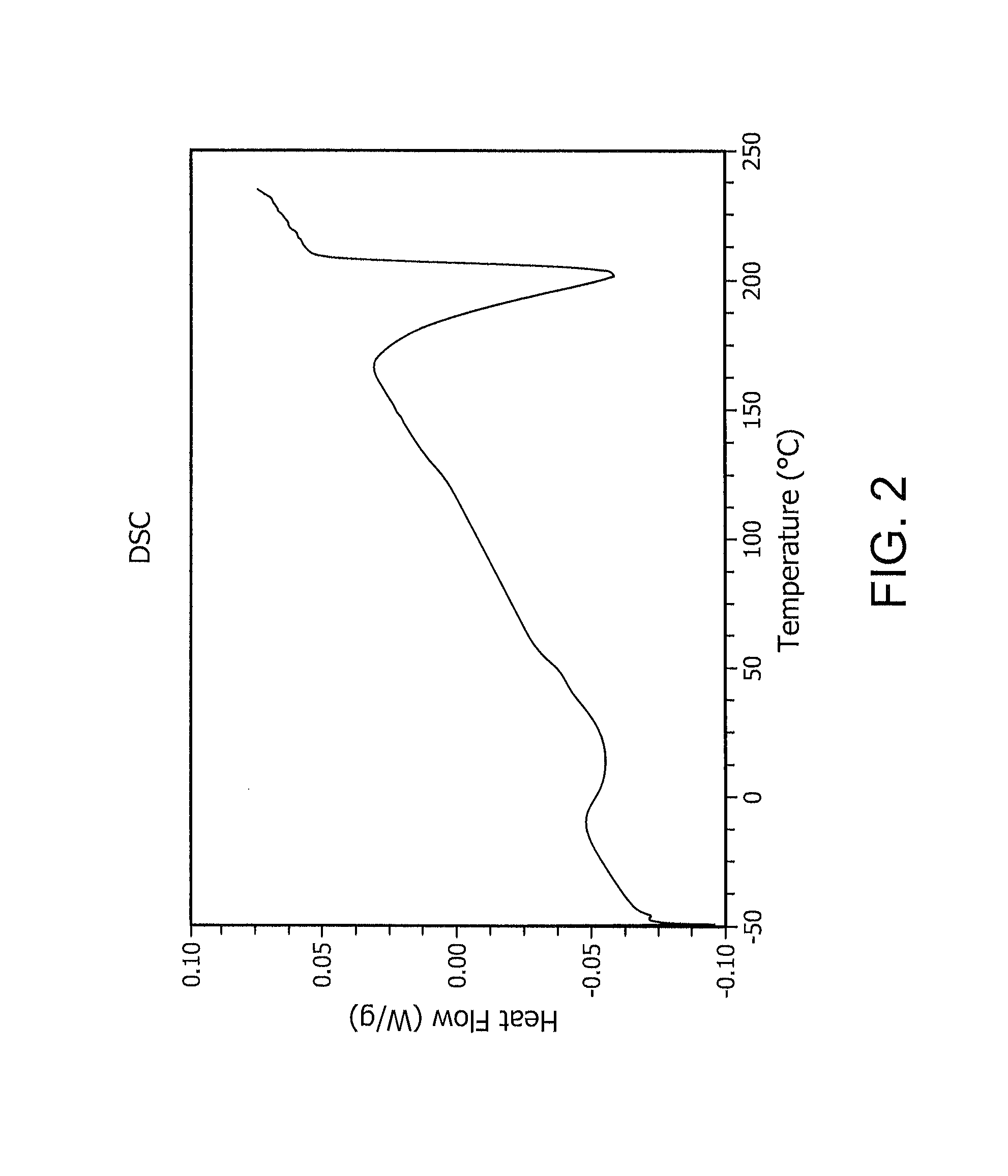Reactive oxidative species generating materials and methods of use
a technology of reactive oxidative species and generating materials, which is applied in the direction of prosthesis, drug composition, cardiovascular disorder, etc., can solve the problems of degradation reaction, possible reduction of overall polymer molecular weight, and degradation reaction to the polymer or organic material level,
- Summary
- Abstract
- Description
- Claims
- Application Information
AI Technical Summary
Benefits of technology
Problems solved by technology
Method used
Image
Examples
example 1
ROS Test Method of Detection Using the Pholasin® Assay
[0085]To determine the amount of ROS present in a particular sample a FLUOstar Omega multi-mode microplate reader (BMG Labtech Inc., Cary, N.C.) was utilized, typically with a 96-well sample plate. This reader has dual-syringe injector capacity, with the ability to inject reagents into sample wells. The protocol from ABEL assay kit 61M (Knight Scientific Ltd., 15 Wolseley Close Business Park, Plymouth, PL2 3BY, UK), which includes the ROS sensitive photoprotein Pholasin®, was followed for microplate parameters. The injector pumps were washed with reverse osmosis / deionized (RO / DI) water and the reader was set to the appropriate temperature (typically 37° C.).
[0086]In testing the polymeric samples, typically an approximately 0.5 cm diameter disc was used, which was slightly smaller than the diameter of a given well. Given the target number of samples to analyze, the appropriate numbers of wells were filled with a buffer solution, a...
example 2
Superoxide and Other ROS Determination Using the Pholasin® Assay
[0088]To determine the signal attributable to superoxide for a given sample, following the method described in Example 1, a sister sample well for the microplate was concurrently prepared in which the buffer was augmented additionally with superoxide dismutase (SOD). SOD was provided in the ABEL-61M test kit. The difference in normalized RLU traces between Example 1 and the sister well with SOD yielded the signal attributable to superoxide, typically reported as the maximum RLU. The “other ROS” that does not include superoxide is the data recorded for the sample well that contained SOD.
example 3
Singlet Oxygen Test Method Using MCLA Assay on Microplate
[0089]A FLUOstar Omega multi-mode microplate reader was utilized, typically with a 96-well sample plate. Test chamber temperature was set to 37° C. In testing the polymeric samples, typically an approximately 0.5 cm diameter disc was used, which was slightly smaller than the diameter of a given well. The chemiluminescent indicator used to detect superoxide and singlet oxygen was MCLA, or 2-methyl-6-(p-methoxyphenyl)-3,7-(dihydroimidazo[1,2alpha]pyrazine-3-one (Bancirova, Luminescence, 26 (6), 685-88 (2011)). MCLA was purchased from Molecular Probes, Eugene, Oreg. Sister sample wells were prepared as follows:[0090]1. Irradiated coupon with buffered MCLA solution[0091]2. Irradiated coupon with buffered MCLA & SOD[0092]3. Irradiated coupon with buffered MCLA & SOD & NaN3 [0093]4. Irradiated coupon with buffered MCLA & NaN3 [0094]5. Buffered MCLA only
Following well preparation, the well plate was quickly inserted into the micropla...
PUM
| Property | Measurement | Unit |
|---|---|---|
| time | aaaaa | aaaaa |
| time | aaaaa | aaaaa |
| crystalline melt temperature | aaaaa | aaaaa |
Abstract
Description
Claims
Application Information
 Login to View More
Login to View More - R&D
- Intellectual Property
- Life Sciences
- Materials
- Tech Scout
- Unparalleled Data Quality
- Higher Quality Content
- 60% Fewer Hallucinations
Browse by: Latest US Patents, China's latest patents, Technical Efficacy Thesaurus, Application Domain, Technology Topic, Popular Technical Reports.
© 2025 PatSnap. All rights reserved.Legal|Privacy policy|Modern Slavery Act Transparency Statement|Sitemap|About US| Contact US: help@patsnap.com



